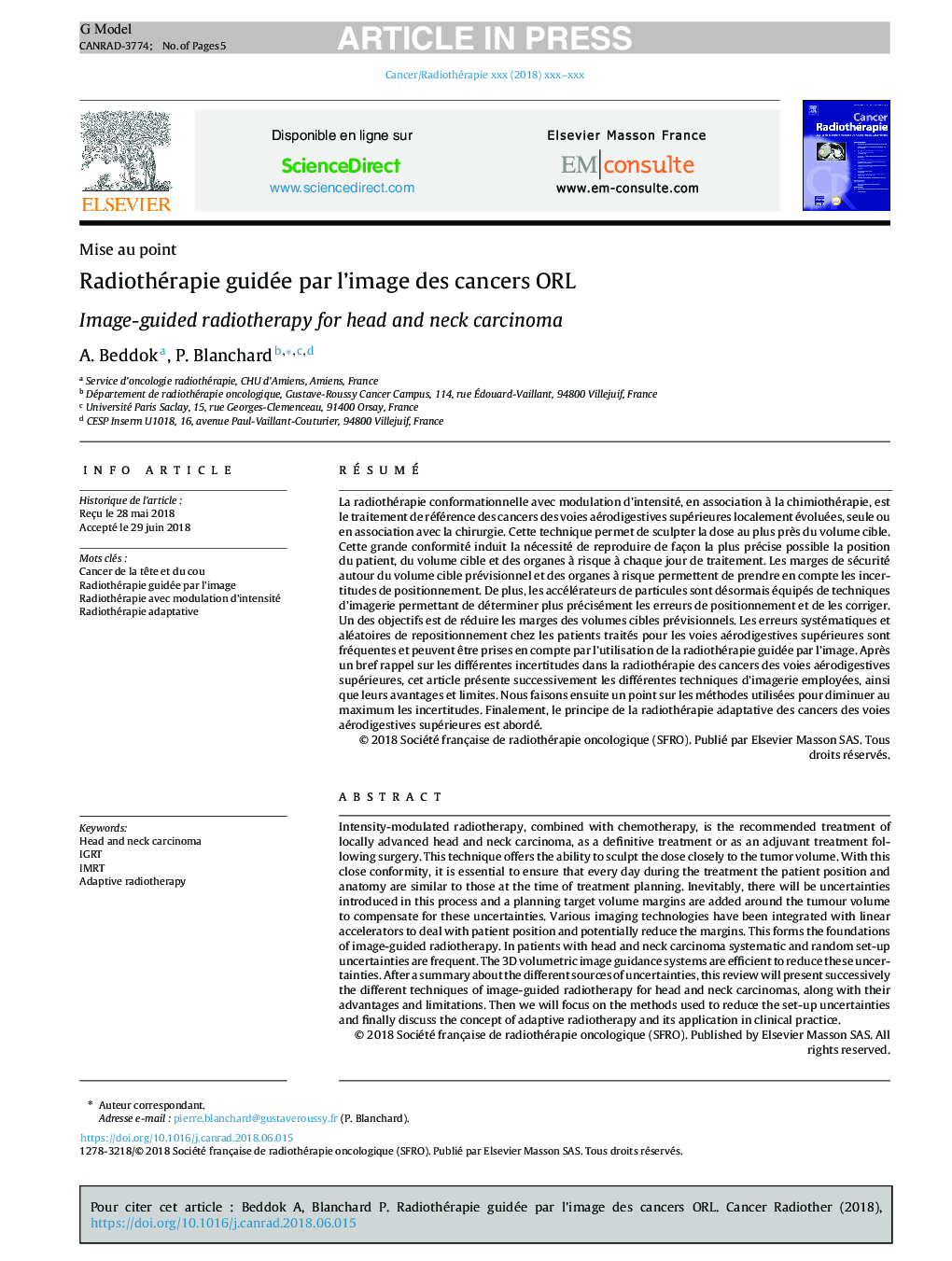| Article ID | Journal | Published Year | Pages | File Type |
|---|---|---|---|---|
| 10157539 | Cancer/Radiothérapie | 2018 | 5 Pages |
Abstract
Intensity-modulated radiotherapy, combined with chemotherapy, is the recommended treatment of locally advanced head and neck carcinoma, as a definitive treatment or as an adjuvant treatment following surgery. This technique offers the ability to sculpt the dose closely to the tumor volume. With this close conformity, it is essential to ensure that every day during the treatment the patient position and anatomy are similar to those at the time of treatment planning. Inevitably, there will be uncertainties introduced in this process and a planning target volume margins are added around the tumour volume to compensate for these uncertainties. Various imaging technologies have been integrated with linear accelerators to deal with patient position and potentially reduce the margins. This forms the foundations of image-guided radiotherapy. In patients with head and neck carcinoma systematic and random set-up uncertainties are frequent. The 3D volumetric image guidance systems are efficient to reduce these uncertainties. After a summary about the different sources of uncertainties, this review will present successively the different techniques of image-guided radiotherapy for head and neck carcinomas, along with their advantages and limitations. Then we will focus on the methods used to reduce the set-up uncertainties and finally discuss the concept of adaptive radiotherapy and its application in clinical practice.
Keywords
Related Topics
Life Sciences
Biochemistry, Genetics and Molecular Biology
Cancer Research
Authors
A. Beddok, P. Blanchard,
